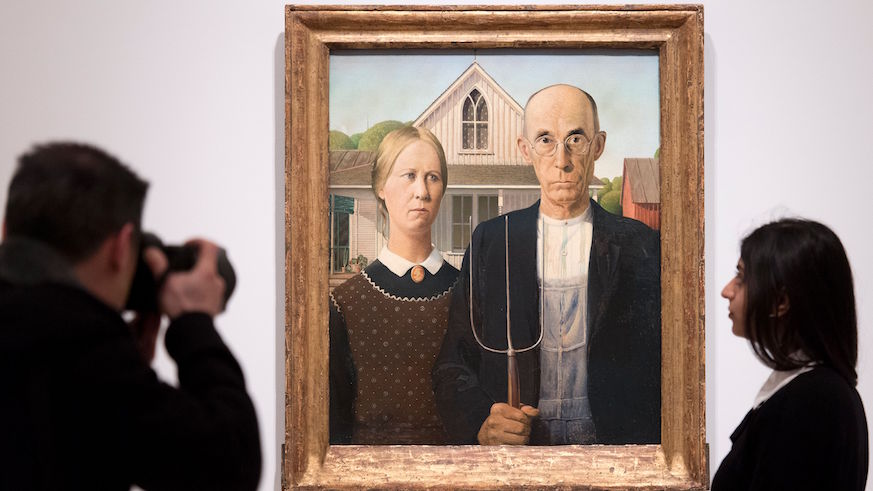In the echelon of America’s most famous couples, there are a few who are recognized all over the world. Barack and Michelle Obama. Beyonce and Jay-Z. George and Amal Clooney.
But there’s one iconic American couple known to art lovers everywhere.
“American Gothic,” a portrait of a dour-looking man with a pitchfork and a woman standing in front of a barn, catapulted painter Grant Wood to instant fame when it was unveiled in 1930.
The Whitney Museum calls it nothing less than the “best-known work of 20th-century American art,” and it’s taking a rare trip from its home at the Art Institute of Chicago for the retrospective exhibit Grant Wood: American Gothic and Other Fables.
His signature style combines his experience as a metalworker, French Impressionist painter and decorative craftsman (his Corn Cob Chandelier is also on display) to create works that were intentionally humble in style and subject.
But within the flat colors, sharp angles and serene people in Wood’s portraits lurks something darker, too.
“The enduring power of Wood’s art owes as much to its mesmerizing psychological ambiguity as to its archetypal Midwestern imagery,” says curator Barbara Haskell. “An eerie silence and disquiet runs throughout his work, complicating its seemingly bucolic, elegiac exterior.”
The Midwestern vistas in Wood’s world are an idealized version of his 1890s childhood in Iowa, spent growing up on a farm. While part of why he chose this setting was to recapture that time in his life, the comforting scenes were also a way to deal with the isolation of being a closeted gay man.
Wood also lived through a tumultuous time in American history, from the Great Depression to the initial years of World War II, which drove him to create works that further distorted the real world in an attempt to seek solace before his death in 1942.
“By subconsciously expressing his conflicted relationship to the homeland he professed to adore,” Haskell continues, “Wood created hypnotic works of apprehension and solitude that may be a truer expression of the unresolved tensions of the American experience than he might ever have imagined, even some 75 years after his death.”
Grant Wood: American Gothic and Other Fables is on view now through June 10 at the Whitney Museum, 99 Gansevoort St.























